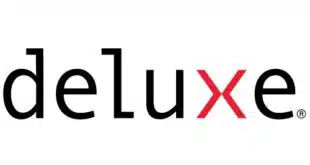Some intrepid acquirers are taking on health-care payments, despite a daunting complex of consumers, health care professionals, multiple organizations, and regulations. They’re finding success.
For most individuals, a co-pay made for a doctor visit or diagnostic exam is what first comes to mind when thinking about health-care payments. For acquirers, however, these consumer-facing payments are but one piece of the health-care payments prize.
Like any business, health-care practices have vendors to pay and patients who pay them. There are collection policies and adaptation to new ways to pay, such as with direct debit online or real-time payment services.
Health-care payments have their own special needs beyond speedy and secure payment acceptance.
“Health-care entities face several unique payment challenges,” says Dr. Avi Israeli, cofounder and dental implantologist at Sage Dental in Wall, N.J. “One key need is the ability to manage both patient payments and insurance claims efficiently. Billing can involve complex scenarios, like co-pays, deductibles, and varying reimbursement rates, which create confusion for patients and increase administrative work for providers.”
While some health-care practitioners may still need point-of-sale terminals with contactless capability or even one not using a dial-up connection, many have more sophisticated needs. One driver is that 66% of providers, according to a “2023 Trends in Healthcare Report” from J.P. Morgan Healthcare Payments, are prioritizing an increase in online, automated, and self-service payments.
“Due to unexpected and typically larger balances, health-care entities need to offer flexible, long-term, possibly alternative payment options to patients,” says Nicole Miller, chief operating officer at Nordis Technologies. Nordis is a Coral Springs, Fla.-based enterprise software provider specializing in customer communications management technology.
“Research shows that patients want to pay medical debt,” Miller adds. “They just need options to extend without the high cost of typical credit usage. Clear and concise billing adjudicated with insurance benefits with integrated payment links is key to capturing the payments.”
At J.P. Morgan Healthcare Payments, a tailored approach is employed for health-care payments, says Jeff Lin, global head. The goal is to simplify payments for this segment, Lin says, not so much on the clinical side but administratively, where payments are very complex.
For example, many payments companies’ clients sell a product or service with the transaction reconciling that day or soon after. In health care, though, a service may not be fully reconciled for weeks. This is “the unique thing about health care versus other industries where you are buying a product,” Lin says. “With health care, the bill may show up 60 to 90 days after the services are delivered.”
Embedded Finance
So how can payments companies help? Integration is the key word.
“Payment companies can help simplify the payment-acceptance process by offering integrated systems that handle both insurance and patient payments in one platform,” Sage Dental’s Israeli says. “They can provide tools for real-time verification of insurance coverage, reduce paperwork, and allow patients to set up payment plans for outstanding balances.”
“These systems should be simple and secure,” he adds, “ensuring smooth transactions while protecting sensitive patient data.” In addition to conventional consumer lending providers, Israeli’s practice also accepts Affirm Inc., an installment-payments provider often associated with retail transactions.
One avenue for that diversity of payments lies with independent software vendors, particularly developers with programs for specialized fields of health care. Not only can they fulfill the operational needs of a practice or clinic, but also provide payment processing functions and broader financial tools.
“Critical to the effectiveness of ISVs are embedded-finance solutions, which can significantly reduce administrative burdens for providers,” Lin says. “With embedded finance, ISVs help providers to optimize administrative workflows with integrated billing and payment processing, and improved revenue-cycle management. ISVs and embedded finance enhance operational efficiency and allow health-care organizations to redirect resources towards patient care.”
Nordis Technologies’ Miller has a similar view about the value of additional payments and financial services. “ISVs are critical to the patient experience in providing the clarity of statements, the linkage to insurance benefits, and allowing for built in payments that are simple to execute,” she says.
The Bad Debt Challenge
Acquirers can help these clients. They can “provide low-cost, no-cost payment-plan models or alternative consumer pay options that allow the health-care entity to receive payment and the patient/consumer to pay over time without high-cost interest and debt,” Miller says. She cites a 2023 Mastercard survey that found 14% of adults and 23% of Millennials prioritize bills that are easiest to pay, regardless of other factors.
Some health-care organizations have turned to electronic health records vendors for payment services, says Pete Heydt, president of Durham, N.C.-based PatientPay LLC, a health-care payment-services provider. This hasn’t always worked out well, he says.
“These vendors tout AI-powered solutions for payment, yet they haven’t been able to deliver faster payments or even increased payments at less cost,” Heydt says. “In 2025, we’ll see these vendors start to accept that they can’t be everything to everyone. This will open the door to integrations with independent software vendors that offer best-in-breed solutions, like those that incorporate predictive analytics and behavioral science along with the needed features and functions for success to drive consumer engagement.”
While there is some interest in real-time payments, most health-care practices are challenged by patient bad debt, Lin says. Providers want to ensure payments are made at all, regardless of timing, he says. That’s where services such as automated payment reminders via email and text can help, as well as flexible, automated payment plans, he says.
And, because many consumers are well-accustomed to online bill payments for such obligations as mortgages and utilities, electronic statements and online payments can be easily incorporated into health care.
As a practitioner, Israeli says customized payment services that are scalable and compliant with industry standards are vital. “They offer reporting tools that are more detailed, help practices handle cash flow, and also facilitate various payment methods, ranging from credit cards to digital wallets. Regulatory compliance, with HIPAA in particular, mandating stringent rules on the privacy of patients’ data is very essential,” he says.
Reaching health-care providers, and helping them understand how payment services can help them, takes more than a cold call or referral. It usually is a multi-step process.
“The sales process in health care is unique, often involving multiple stakeholders who need to evaluate the technology and compliance features before making decisions,” Israeli says.
‘Trust And Credibility’
As acquirers have learned, knowing how a prospective client operates is essential to knowing which payment services might solve at least some of their issues.
“The sales process for health-care providers often involves addressing a multi-tiered decision-making structure, including administrators, [information technology] departments, and clinical staff,” says Millie Hoffman, director of product management at RXNT, an Annapolis, Md.-based health-care software and technology provider.
“Providers value proven case studies and [return-on-investment] data that demonstrate how a payment solution can enhance patient satisfaction and reduce administrative workload. Building trust through knowledge of healthcare-specific challenges and regulations is essential for success in this market,” Hoffmann says.
The depth of regulation and complex nature of health care also make the sales process different, Lin says. “Potential partners must have a deep understanding of health-care operations, regulatory requirements, and the unique needs of providers. Building trust and credibility is paramount, as health-care organizations prioritize partnerships with vendors who demonstrate expertise and a commitment to compliance and security.”





